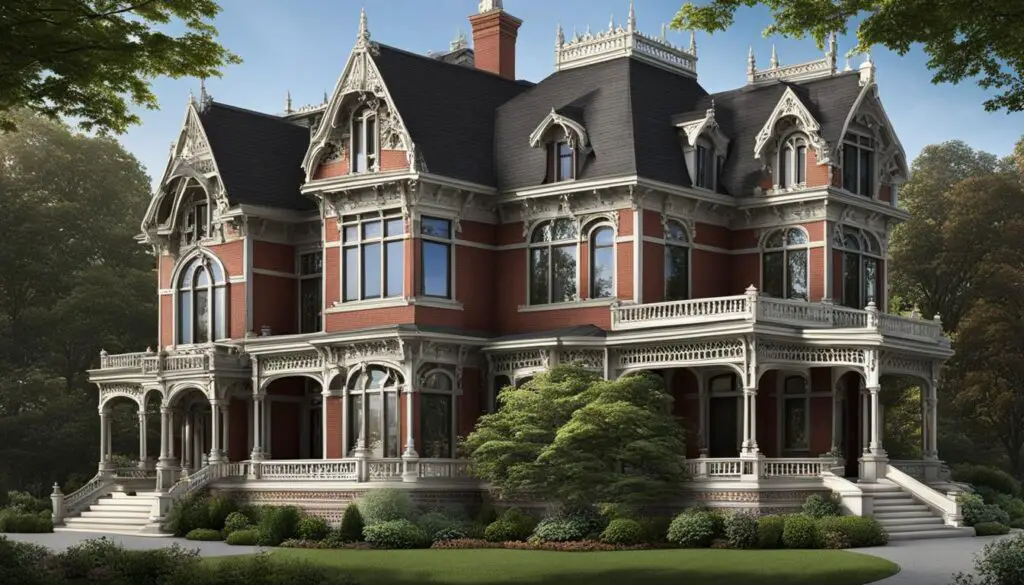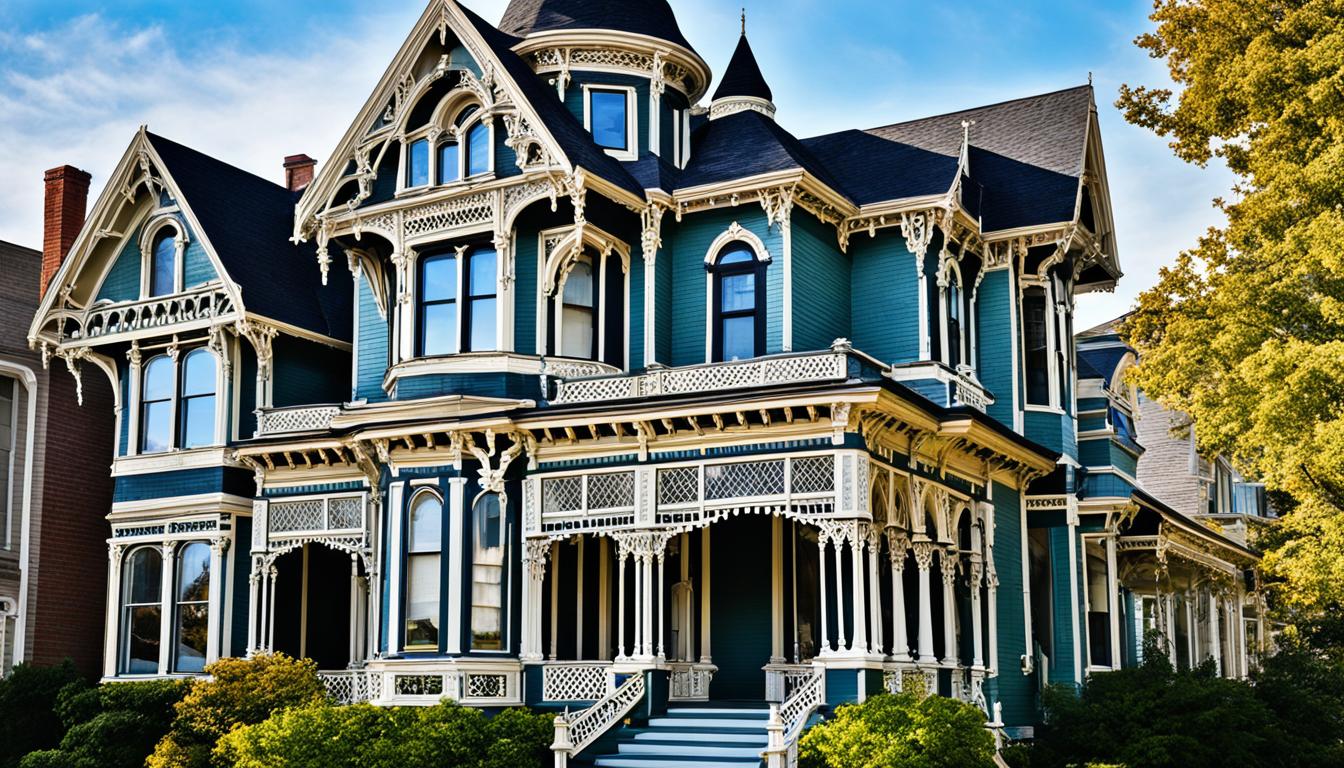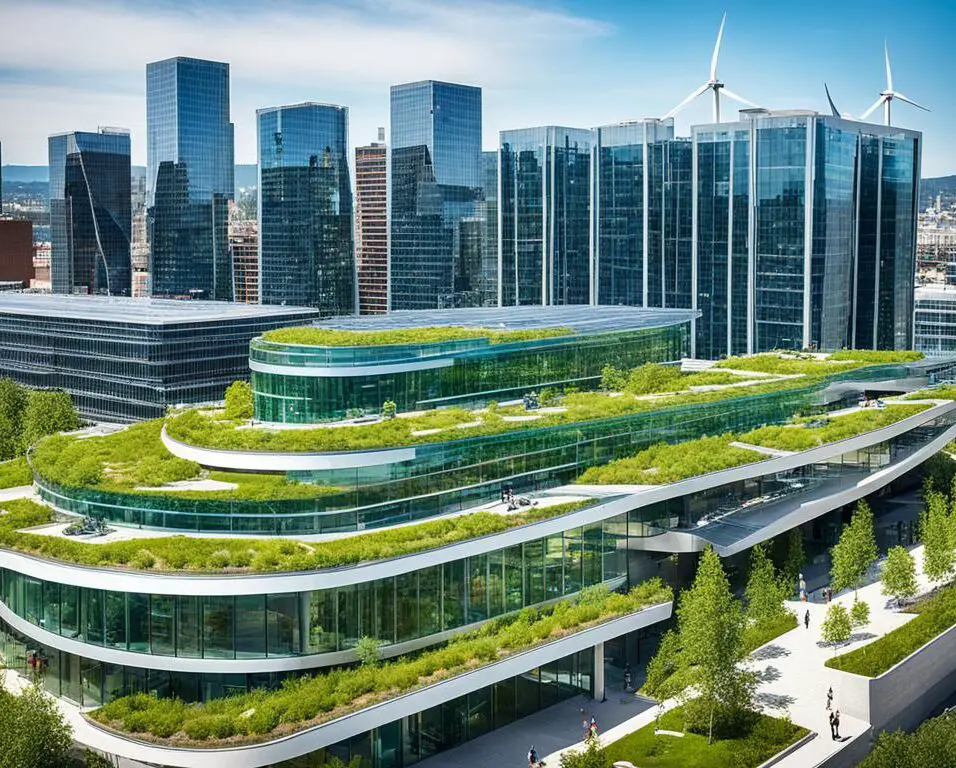Uncover the Charm of Victorian Architecture Characteristics
Victorian architecture is renowned for its elegant style and historical allure. Buildings constructed during the 17th century showcase the unique architectural trends and design features of the Victorian era. With intricate detailing, ornate facades, steep roofs, decorative trim work, and large windows, Victorian buildings exude grandeur and attention to detail. This style incorporates various architectural influences, such as Gothic, Italianate, and Queen Anne, resulting in visually stunning structures that captivate those who appreciate architectural history and craftsmanship.
During the Victorian era, architects embraced ornate facades with intricate detailing, decorative trim work, and patterns. These elements, along with large windows adorned with stained glass, flood the interiors with natural light. The Gothic influence can be seen in the pointed arches and intricate stone carvings, while the Italianate style adds elaborate cornices and decorative brackets. The Queen Anne style, on the other hand, presents asymmetrical facades and ornamental features. These design elements are key to the unique allure of Victorian architecture.
Key Takeaways:
- Victorian architecture is known for its elegant style and historical charm
- Characteristics include intricate detailing, ornate facades, steep roofs, decorative trim work, and large windows
- The style incorporates Gothic, Italianate, and Queen Anne influences
- Famous examples include the Houses of Parliament in London and the Flatiron Building in New York City
- Notable Victorian architects include Sir Charles Barry, Augustus Pugin, and Richard Norman Shaw
Elements of Victorian Architecture
Victorian architecture is characterized by several key elements that define its unique style and aesthetic appeal.
Ornate Facades
One of the distinguishing features of Victorian architecture is its ornate facades. These facades often exhibit intricate detailing, decorative trim work, and captivating patterns and motifs. The ornate facades serve as a visual representation of the craftsmanship and attention to detail that were highly valued during the Victorian era.
Large Windows
Another prominent element of Victorian architecture is the presence of large windows. These windows are not only functional but also play a significant role in enhancing the overall grandeur of the buildings. The windows are typically adorned with intricate stained glass, allowing ample natural light to filter into the interiors while adding a touch of elegance to the façade.
Gothic Influences
The Victorian era saw a revival of Gothic architecture, and this influence can be seen in many Victorian buildings. Gothic elements, such as pointed arches and intricate stone carvings, are incorporated into the design, giving these structures a sense of grandeur and historical significance.
Italianate Style
The Italianate style also made its mark on Victorian architecture. This style is characterized by elaborate cornices, decorative brackets, and balustrades, which add a touch of sophistication and elegance to the buildings. The Italianate features often complement the ornate facades, creating a harmonious blend of styles.
Queen Anne Style
The Queen Anne style is another architectural influence that is prevalent in Victorian buildings. This style is known for its asymmetrical facades, ornamental details, and decorative elements such as turrets and bay windows. The Queen Anne style adds a sense of whimsy and charm to the overall design, further enhancing the appeal of Victorian architecture.
These various elements come together to create visually stunning buildings that showcase the craftsmanship and attention to detail of the Victorian era. The combination of ornate facades, decorative trim work, large windows, Gothic influences, Italianate style, and Queen Anne style makes Victorian architecture truly unique and captivating.

Examples of Victorian Architecture
Victorian architecture has left an indelible mark on cities across the globe, boasting numerous famous buildings that exemplify the style’s beauty and grandeur. Among the most notable examples is the iconic Houses of Parliament in London, renowned for its stunning Gothic Revival architecture. This majestic structure, also known as the Palace of Westminster, showcases intricate stone carvings, towering spires, and impressive buttresses that epitomize the essence of Victorian design.
Another iconic Victorian building is the Flatiron Building in New York City. This triangular-shaped landmark, characterized by its ornate facades, showcases the architectural brilliance of the Victorian era. Its elegant features, such as decorative trim work and arched windows, make it a true testament to the unique allure of Victorian architecture.
In addition to these famous structures, other historical landmarks proudly display Victorian characteristics. The Brighton Pavilion in England, for example, stands as a testament to the flamboyant and exotic influences of the Victorian aesthetic. Adorned with intricate domes, minarets, and Oriental-inspired motifs, this building exemplifies the eclectic nature of Victorian architecture.
Throughout the 17th century, notable Victorian architects contributed greatly to the development of this architectural style. Sir Charles Barry, Augustus Pugin, and Richard Norman Shaw are just a few of the renowned architects known for their significant contributions to Victorian architecture. Their designs and creations, such as the iconic Tower Bridge in London, have become lasting symbols of the elegance and innovation synonymous with the Victorian era.








